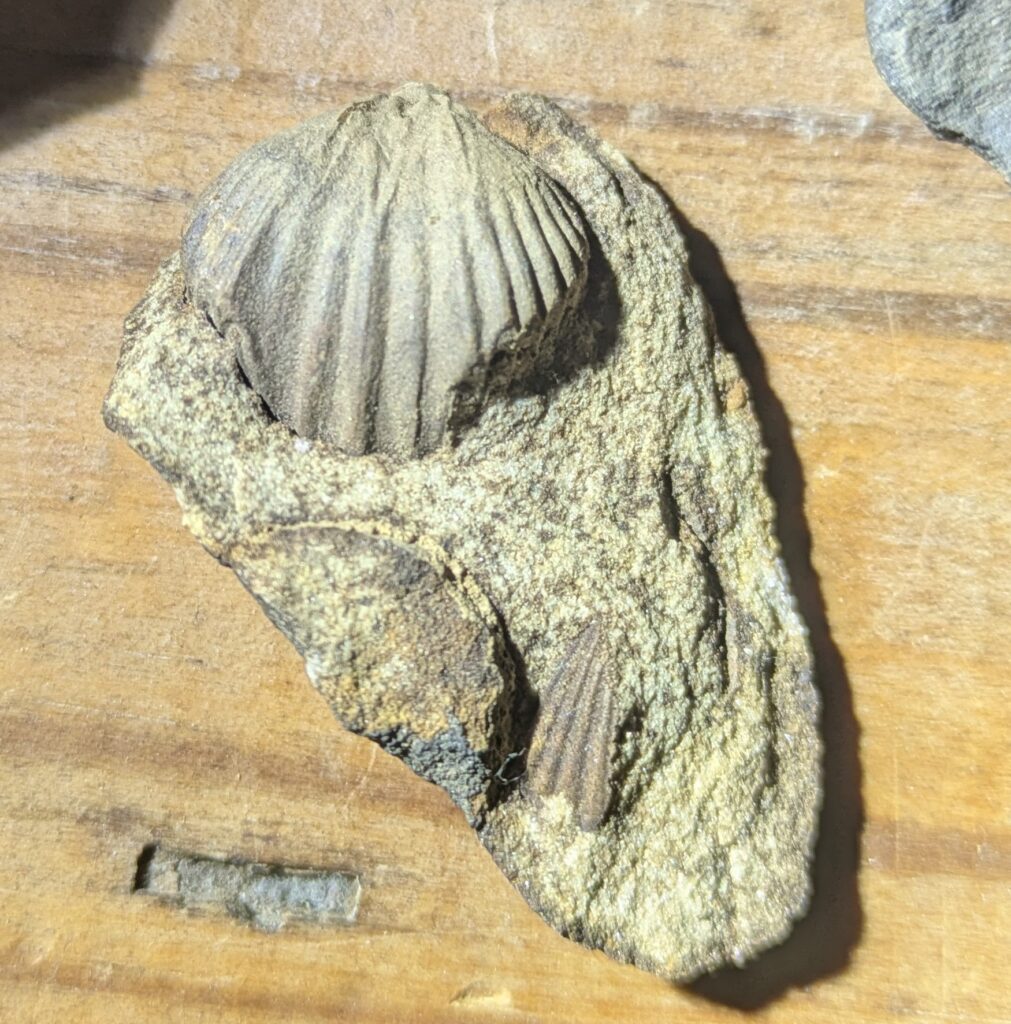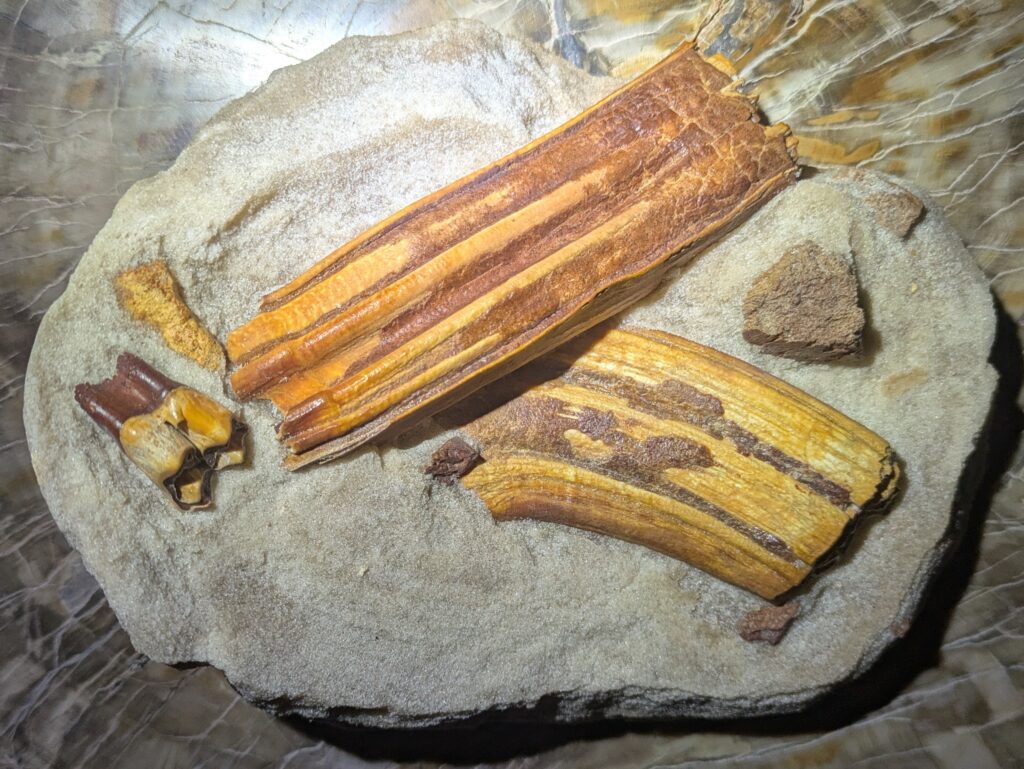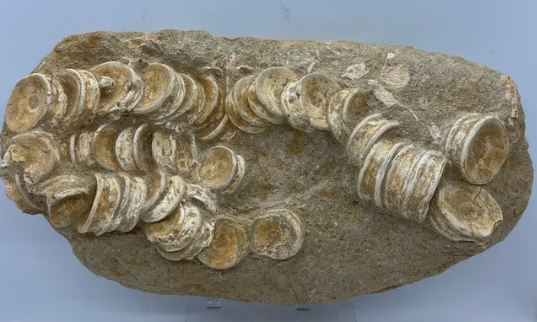Sandstone: A Fossil Treasure Trove
Sandstone, a sedimentary rock composed primarily of sand-sized mineral particles, is one of the most abundant and versatile rocks on Earth. Renowned for its durability, aesthetic appeal, and geological significance, sandstone also holds a special place in the world of paleontology. As a rock that often forms in environments where fossils can accumulate, sandstone provides a window into ancient ecosystems and the story of life on Earth.
Formation of Sandstone
Sandstone forms from the cementation of sand grains, typically made of quartz and feldspar, that are transported and deposited by water, wind, or ice. Over time, these sediments are buried and compacted, with natural cements like silica, calcite, or iron oxides binding the grains together.
Common Environments of Formation
- Riverbeds and Floodplains: Rivers deposit sand and organic material in meandering channels and floodplains.
- Beaches and Coastal Dunes: Wind and waves deposit sand near shores, sometimes preserving impressions or burrows.
- Deserts: Wind-blown sand in arid environments creates sandstone formations with cross-bedded structures.
- Marine Shelves: Shallow marine environments accumulate sand and organic debris that can later lithify into sandstone.
Fossils in Sandstone
Sandstone is a significant host rock for fossils, particularly in environments where sedimentation is rapid and burial is swift enough to protect organic remains from decay and scavenging.
Types of Fossils Found in Sandstone
- Body Fossils:
- Sandstone can preserve the remains of hard-bodied organisms, such as shells, bones, and teeth.
- Examples include dinosaur bones found in formations like the Morrison Formation (USA) and marine shells in ancient seabeds.
- Trace Fossils:
- Sandstone is particularly effective at preserving trace fossils, such as footprints, burrows, and feeding marks.
- Examples include dinosaur footprints in the Navajo Sandstone of Utah and trilobite tracks in Cambrian sandstones.
- Plant Fossils:
- Fossilized plants, including leaves, stems, and roots, are often found in sandstone deposited in river valleys or coastal plains.
- Fossilized tree trunks and impressions, such as those from the Petrified Forest National Park (Arizona), are common in sandstones.
Preservation in Sandstone
The ability of sandstone to preserve fossils depends on factors such as grain size, sedimentation rate, and mineral composition.
- Grain Size:
- Fine-grained sandstones provide better detail for fossils because the smaller particles can capture more intricate features.
- Cement Type:
- Silica cement preserves fossils well because it is resistant to weathering, whereas calcite cement may dissolve more easily, potentially damaging fossils.
- Rapid Burial:
- In river deltas or floodplains, rapid sedimentation buries organisms quickly, protecting them from scavengers and decay.
Famous Sandstone Fossil Sites
- Navajo Sandstone (USA):
- Known for its stunning cross-bedded layers, this Jurassic formation in Utah and Arizona contains numerous dinosaur footprints, providing insights into behavior and movement.
- Morrison Formation (USA):
- This Late Jurassic sandstone formation is famous for yielding spectacular dinosaur fossils, including Apatosaurus and Allosaurus.
- Wadi Rum (Jordan):
- This sandstone desert is not only geologically striking but also holds ancient trace fossils, such as burrows and invertebrate tracks.
- Chinle Formation (USA):
- Composed of sandstone and other sedimentary rocks, it contains fossils of early dinosaurs, phytosaurs, and ancient plants.
Challenges of Fossil Retrieval from Sandstone
While sandstone can be a rich source of fossils, extracting fossils from this rock type can present challenges:
- Hardness: Sandstone’s durability can make excavation labor-intensive.
- Fragmentation: Fossils within sandstone may be fractured due to pressure from overlying sediments.
- Weathering: Exposed sandstone erodes over time, potentially damaging surface fossils.
Despite these challenges, sandstone remains one of the most productive rocks for fossil discovery.
The Legacy of Sandstone Fossils
Sandstone’s ability to preserve fossils has provided critical insights into Earth’s history. From the tracks of ancient creatures to the remains of massive dinosaurs, sandstone has captured moments of life in stone. These fossils not only reveal the diversity of life in past ecosystems but also help reconstruct ancient climates, landscapes, and geological processes.
As a rock that bridges the worlds of geology and paleontology, sandstone holds stories millions of years in the making, waiting to be uncovered and shared. Whether it’s a delicate fern impression or the mighty bones of a dinosaur, the fossils found in sandstone remind us of the incredible history written in Earth’s strata.


